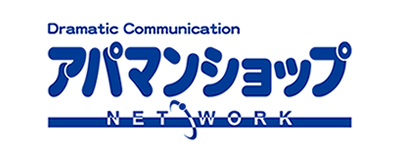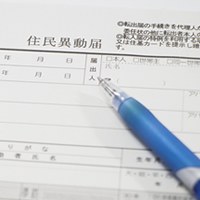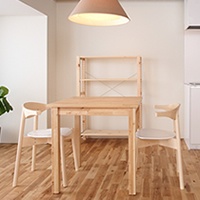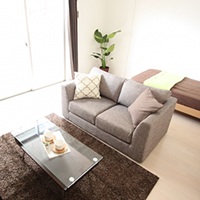Living in Tokyo as a Foreigner: Location, Average Rent, and Shared House
- Students
- Working Holiday
The last renewal day|
- Facebook()
- X
- LINESend this page by LINE
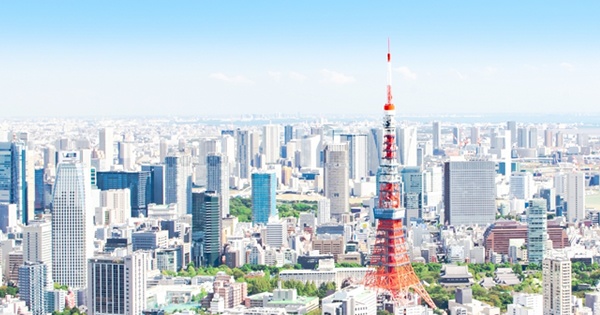
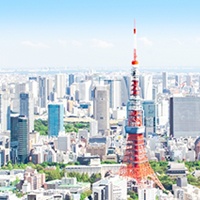
Even if you say Tokyo in a word, the characteristics vary greatly depending on the location. For example, Marunouchi is the office district, but Harakujuku is a town of youth trend fashion. Shinjuku is the world's largest terminal. As you see, they have great differences in regional characteristics and ease of living. Therefore, it is not easy to choose where to live for foreigners who are looking for a place to live.
Even if you want to live in a popular area of Tokyo, the rent is set higher. So you might not be able to enjoy your free time because of financially difficult. The important thing is to find a place where you can achieve your desired lifestyle within your budget. For example, if you cook by yourself, a place with many supermarkets is recommended. On the other hand, if you frequently eat outside, it would be nice to live around cheap and delicious restaurants.
This article explains about the characteristics, renting prices, recommended places and convenience of each area in Tokyo. Furthermore, there is information about apps and websites that are useful for finding a living place, such as a rental room and a shared house. Referring to this article, let's find a property that meets your requirements.
*Rent market price in Tokyo is referring to statistical information on the rental information website suumo.
Recommended Useful Websites for Searching Shared Houses
The largest shared house management company in the industry, which has been in business for 20 years. It offers shared houses with over 5,000 rooms not only in Tokyo but also in the Kanto region. There are no deposits, key money, brokerage fees, no need for joint guarantors, furniture, home appliances, and internet access. Therefore, you can enter the room as soon as possible. It also supports English, Chinese, French, Korean, and so on. It has a women-only floor and a men-only floor. All inquiries and reservations for the property are completed online. There are no complicated procedures. The website also lists the information of the share house resident, such as gender, nationality, age, so you can check what kind of people are living before moving in.
By using the free word search on the top right of the Japanese website and entering the keyword "シェアハウス", you can easily narrow down the information on shared houses throughout Japan. You can also sort by rent, age, and size, making it easy to find a shared house that meets your requirements. There is a lot of content such as station rankings, rent prices, room search manuals. Free membership registration allows you to save search conditions and register your favorite properties.
Contents
Recommended Living Areas in Tokyo
The Tokyo metropolitan area is divided into three areas: the Tokyo 23 wards, the Tama area, and the islands. The center of Tokyo 23 wards is consists of multiple areas: major stations along the JR Yamanote Line area (Tokyo, Shinjuku, Shibuya, Shinagawa, Ikebukuro, Ueno, etc.), and major subway stations area (Roppongi, Aoyama, Otemachi, Kasumigaseki, Akasaka, etc.). The rent tends to be higher on the inside of the JR Yamanote Line, such as Chiyoda Ward, Chuo Ward, Minato Ward, Shinjuku Ward, Shibuya Ward. It is cheaper as further away from the city center. Areas other than Tokyo 23 wards function as bedroom suburbs, and the rent is lower than the 23 wards.
The prefecture with the highest rent in Japan is Tokyo. The average rent price for a single is 80,000 yen per month. Even in the same Tokyo, rent varies greatly depending on the location. Knowing the characteristics of each area and the rent price, you can efficiently find a room that satisfies you.
This section describes the characteristics of each Tokyo area, the average rent market price, and recommended locations. Please refer to it when you search for rental housing or share houses in Tokyo.
Ikebukuro Area (Bunkyo Ward, Toshima Ward, Kita Ward, Arakawa Ward, Itabashi Ward, and Nerima Ward)
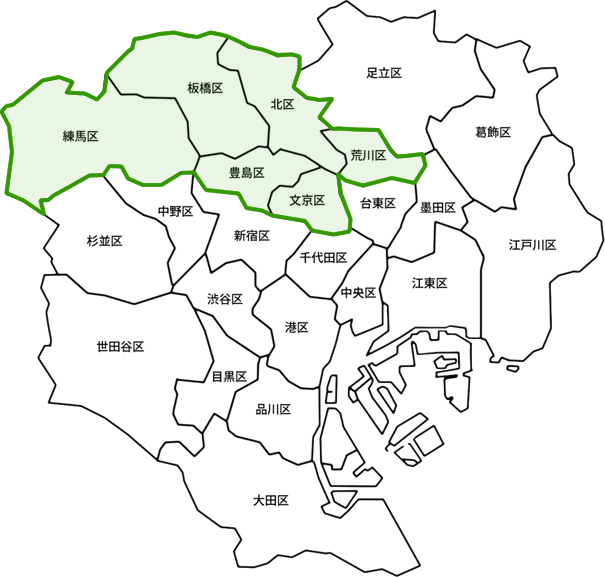
Since Bunkyo Ward is the area with the lowest crime rate in Tokyo, it is a city where women living alone can live with peace of mind. There are famous Japanese universities such as the University of Tokyo and Ochanomizu University, and access is good. However, the rent market price tends to be a little high at 79,000 yen per 1R.
Itabashi Ward and neighboring Nerima Ward are residential areas. Even though there is no large office and downtown, it is convenience to live because access to Ikebukuro is very good. There are many shops and supermarkets though it depends on the station. Generally, renting price is 1R 64,000 yen, 1K 75,000 yen, so it is relatively easy to find properties at low prices. This area is recommended for people who want to live reasonably.
Shinjuku Area (Shinjuku Ward, Nakano Ward, and Suginami Ward)
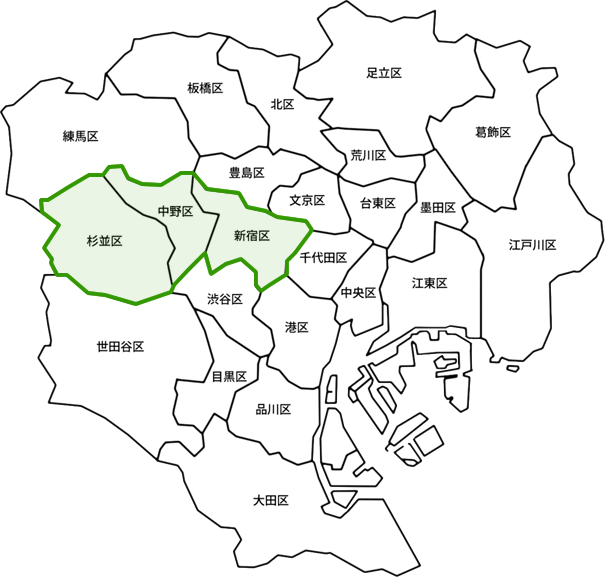
The area with the most foreigners in Tokyo is Shinjuku. Many Chinese and Koreans, in particular, live in this area. Although downtown areas such as Kabukicho and Shin-Okubo are poor security, residential areas such as Wakaba and Shimochiai are no problem. There are 11 train lines in Shinjuku Ward. Therefore, you can easily access not only Tokyo but also Chiba, Kanagawa, and Saitama.
Although there are some popular areas, such as Koenji and Ogikubo in Suginami Ward, the rent price is on average at 1R 67,000 yen. This area is suitable for foreigners who want to live in a popular area. Also, it is close to Shinjuku, Shibuya, and Ikebukuro, and transportation is convenient. Although there are a few cases of bicycle theft, the crime rate is relatively low in the Shinjuku area. Even women can live with peace of mind if the place is some distance away from the station area.
Shibuya/Meguro Area (Meguro Ward, Setagaya Ward, and Shibuya Ward)

Meguro Ward is a safe and stylish city as a whole. Since there are many properties for high-income earners, the average rent is 87,000 yen for 1R and 99,000 yen for 1K, which is a high level compared to other regions. Therefore, international students and foreigners with a low working salary cannot live comfortably. However, around Gakugei-daigaku station, the rent price is 1R 82,000 yen / 1K 91,000 yen. It is relatively cheap in Meguro Ward. You can go to Shibuya and Yokohama without transferring trains though it is very crowded during commuting rush hours.
Setagaya Ward has many high-end residential areas. The rent price is 1R 72,000 yen / 1K 87,000 yen, which is slightly higher than the market price. There are plenty of commercial facilities, so it is a convenient place to live for those who eat outside. Especially, Meidaimae is a popular area among young people. Since there is Meiji University nearby, many students live there. The rent price is relatively cheap so you can find it around 1R 76,000 yen. Although there is no big supermarket with daily necessities, there are plenty of cheap restaurants. We recommend this area to the 20s because you can go to Shimokitazawa in 2 minutes by train, and also easy access to Shibuya.
Akihabara/Shinagawa Area (Chiyoda Ward, Chuo Ward, Minato Ward, Shinagawa Ward, and Ota Ward)
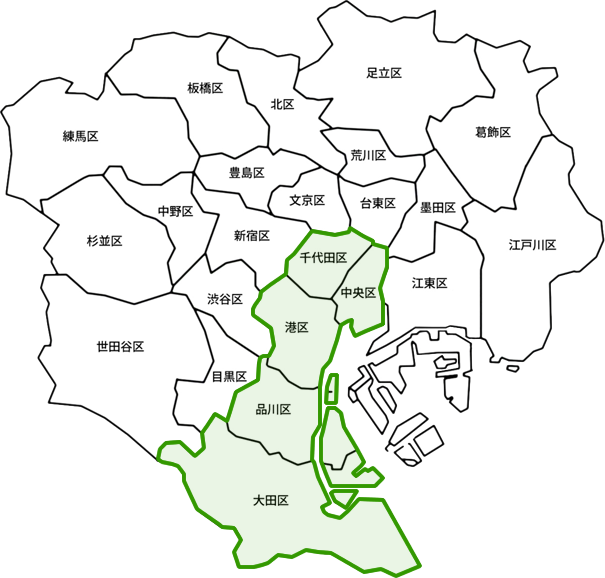
Ota Ward has the most foreigners in this area. It is divided into two divisions: factories gathered area and high-class residential areas such as Denenchofu and Sanno. Kamata, the administrative and commercial center of Ota Ward, has the greatest appeal of convenient transportation. It is easy to access both Tokyo Station and Haneda Airport. Therefore, it is recommended for foreigners who have many business trips, travels, and temporary returns. The rent price of Kamata is 1R 70,000 yen on average. There are shopping streets around the station where many supermarkets, drug stores, and restaurants place.
Asakusa/Ueno Area (Taito Ward, Sumida Ward, Koto Ward, Adachi Ward, Katsushika Ward, Edogawa Ward)
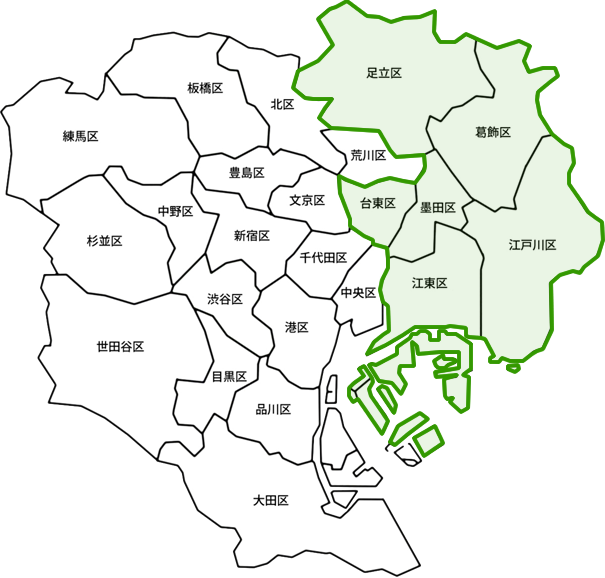
This is the second most foreigners living area: the first is the Shinjuku area. In particular, Edogawa Ward, Adachi Ward, and Koto Ward tend to have more foreigners. There are plenty of tourist attractions such as Asakusa, Ueno Zoo, Tokyo Skytree, Ameyoko. However, it is not for women who live alone because some places are security concerns at night.
If you are looking for a rental property in this area due to school or work, Kitasenju Station in Adachi Ward can be your choice. Kitasenju Station has 5 train routes and is convenient for transportation, which is a great attraction. In addition to large shopping malls such as Marui and LUMINE around the station, there are also supermarkets and shopping streets that are convenient for shopping. Although the crime rate around Kitasenju Station is high, it decreases if you walk more than 15 minutes on foot from the station.
Other than Tokyo 23 Wards
In Tokyo, the train network is well developed, and the most popular transportation is by train. Many people use it for commuting. Tokyo has not only a large number of train routes but also a large number of trains, and the last train runs until around 0:00. It is not uncommon for people who commute to Tokyo from Kanagawa, Chiba, and Saitama prefectures to take an hour by train. If you want to save as much rent as possible, you better look for a place other than Tokyo 23 wards.
In areas other than Tokyo 23 wards, we recommend living in bedroom towns such as Musashino City, Tama City, Tachikawa City, Machida City, and Koganei City. Among those cities, Kichijoji is one of the most popular towns though it is a bit far from Tokyo 23 wards. It has always been ranked first in the popular city rankings. Conveniently, you can go to Shinjuku and Shibuya without changing trains using the JR Chuo Line, Sobu Line, and Keio Inokashira Line. In addition to large commercial facilities such as Don Quijote, Yodobashi Camera, and Tokyu Department Store, there are fashionable general stores, cafes, and a retro shopping street where you can purchase everything from daily necessities to fashion items. Also, there are many places you can enjoy on holidays; for example, the Ghibli Museum Mitaka and Inokashira Park, which are popular with foreigners.
Recommended Useful Apps for Finding Rental Properties in Tokyo
It is a rental information app used by 800,000 people a month. First, download the app and register for a free member. After you select the desired conditions, the chat proposes information about suitable rental properties. On the chat, experienced real estate professionals will respond to your personal questions, rent negotiations, and so on. The Chat is available from 10:00 to 23:00 (JST), so it is useful for people who are too busy to go to a real estate agent. Besides, the brokerage fee, which is normally required for one month of rent, is halved. Therefore, you can cut the initial cost. Making a reservation for a tour of the room is available on the chat. On the day, you can meet the salesman of ietty in front of the property. Be careful that the area of posted rental properties is limited in Tokyo, Kanagawa, Saitama, and Chiba. If you are not concerned about speaking Japanese, it is an easy way to search for rental properties.
On this website, you can easily search for rental properties in Tokyo as well as all over Japan. In addition to searching from municipalities, you can also search from popular train lines and stations. There are also a lot of special pages introducing: "No guarantor required", "Furniture home appliances", "No deposit money", and "under 50,000 yen/month". Therefore, you can easily narrow down information on rental properties that meet your requirements. Besides, You can receive max 100,000 yen if you decide your room within 60 days through DOOR chintai. To receive the money, you must apply the campaign and own a bank account of PayPay Bank.
This app's biggest feature is that the chat service helps until you find the best room. In other words, you do not have to talk face-to-face with a real estate agent. Foreigners who are not good at Japanese communication can use the service in relief because there is no sales talk. The chat service is available from 9:30 (JST) to midnight, so you can easily contact. Iepura can propose rental properties only in Tokyo, Kanagawa, Saitama, Chiba, Osaka, Kyoto, Hyogo, and Nara (excluding some areas). Unfortunately, if you plan to move in more than half a year, the service is unavailable. However, the latest rental information that meets your requirements can be sent via an app or email, so you better download it now if you plan to look for rental housing in Tokyo.
How to Search Good Rental Properties and Shared Houses
Many foreigners who come to Tokyo for working holidays or study abroad have a longing for Tokyo and want to live in a city with low rent, high convenience, and convenient transportation. In particular, women tend to prefer a safe place. Some people want to live in stylish areas even if the rent is high, but others prefer low rent even if the security is a little bad. It is a good idea to choose a place to live in, considering what kind of conditions you most desire.
Low rental price
The closer you are to the central Tokyo, the higher your rent. Nerima Ward and Katsushika Ward are relatively cheap. Also, if the property is a little far from the station or the room is old, the rent will be reduced by about 5,000 yen from the local market. If you are not particular about Tokyo 23 wards, you may consider bedroom towns such as Tachikawa City, Machida City, Koganei City, and Musashino City.
Commuting time
If you take a long time to go to work or school, you get tired; so live in a place where you can easily go. In areas where schools and large corporations are concentrated, rents tend to be high and vacant rooms tend to be less. When considering the room, the commuting time should be less than 40 minutes, and the transfer is once.
Security
Although Japan is a safe country, it is not without crime. Generally, crime rates are high in downtown areas such as Shinjuku, Shibuya, and Ikebukuro. Women who live alone should avoid living in places with low traffic, back roads away from stations, and dark residential areas. You should check the crime rate with the link below.
Useful link
Tokyo Crime Map:You can search for crime information that occurred in Tokyo on a map. If you are worried about security, please refer to it.
Convenience of shopping
If the rental room or the nearest station located close to convenience stores, supermarkets, and restaurants, it is convenience to live, whether you are cooking or eating out. Also, if there is a commercial facility such as a drugstore, a consumer electronics retailer, or a department store, you won't be in trouble.
The number of foreigners
In areas where many foreigners live, the living procedure is relatively easier because English speaking staffs might be stationed at the city government: or there would be multilingual websites such as English, Chinese, and Korean. In those areas, there are many share houses and foreigners-welcomed rental housing. Therefore, it is easy for foreign students or workers to find the room they would like.
According to statistics from April 2025, the areas with a lot of foreigners are Shinjuku ward and Edogawa ward in Tokyo; and the areas with few foreigners are Chiyoda ward and Meguro ward.
| Chinese | Taiwanese | Korean | American | Vietnamese | |
|---|---|---|---|---|---|
| Most areas | Koto | Shinjuku | Shinjuku | Minato | Edogawa |
| Least areas | Chiyoda | Chiyoda | Chiyoda | Chiyoda | Chiyoda |
Recommended for Foreigners: Tokyo Rental Room's Information Websites
This website posts over 890,000 rental apartments and shared houses in Tokyo. Many properties show photos of the appearance and the interior of the room; making it easier to imagine the room before coming. Inquiries and tour reservations are all free. There is plenty of useful content for finding rooms in Tokyo, such as “Rental Room Search Manual”, “Check Point for Application / Contract” and “Moving Complete Manual”. Also, there are special pages, especially for foreigners, such as “No guarantor required”, “No deposit / key money”, and “Furniture and home appliances included”.
TIPSUseful Information for Renting a Room in Tokyo, Japan
Layout
- 1R (One room):There is no partition; everything is connected in one room. 1R tends to be cheaper than 1K. For example, the market value for a rental apartment in Shinjuku is 100,000 yen for 1K but 81,000 yen for 1R, which is 19,000 yen cheaper (As of July 2025).
- 1K (One kitchen):There is a door between the kitchen and the room.
Types of Rental Properties
- Apartment (アパート in Japanese):The definition, "apartment" is slightly different even though they use the English word. The number of floors is usually second to third floors. It is built with a wooden or lightweight steel structure. The rental prices tend to be cheaper, but you can hear noises and other people's living sounds. Those who want to keep the rent as low as possible, this type of property is best recommended.
- Mansion (マンション in Japanese):Although the Japanese call mansion, the definition "mansion" is totally different from English. It is similar to apartments, but the structure is different; it is more sturdy. The number of floors is over third floors, and it is built steel-framed reinforced concrete, reinforced concrete, or steel. Soundproofing is relatively high, but you have to pay the common service fee, other than the rent. If you care about security and soundproofing, you should consider living in this type.



